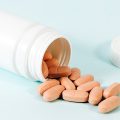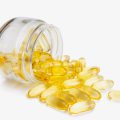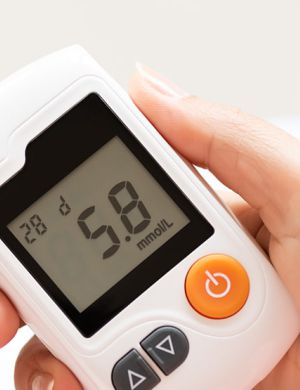
Medical Devices USA/Europe Regulatory Updates round up, Jul 2021
EUROPE
1. First references of harmonised European standards in support of Regulation (EU) 2017/745 published in the OJEU: Commission Implementing Decision (EU) 2021/1182 of 16 July 2021
In accordance with Article 8 of Regulation (EU) 2017/745 of the European Parliament and of the Council, devicesthat are in conformity with the relevant harmonised standards, or the relevant parts of those standards, the references of which have been published in the Official Journal of the European Union, are to be presumed to be in conformity with the requirements of that Regulation covered by those standards or parts thereof.
Reference of the standard:
- EN ISO 10993-23:2021Biological evaluation of medical devices – Part 23: Tests for irritation (ISO 10993-23:2021)
- EN ISO 11135:2014 Sterilization of health care products – Ethylene oxide – Requirements for the development, validation and routine control of a sterilization process for medical devices (ISO 11135:2014)EN ISO 11135:2014/A1:2019
- EN ISO 11137-1:2015 Sterilization of health care products – Radiation – Part 1: Requirements for development, validation and routine control of a sterilization process for medical devices (ISO 11137-1:2006, including Amd 1:2013)EN ISO 11137-1:2015/A2:2019
- EN ISO 11737-2:2020 Sterilization of health care products – Microbiological methods – Part 2: Tests of sterility performed in the definition, validation and maintenance of a sterilization process (ISO 11737-2:2019)
- EN ISO 25424:2019 Sterilization of health care products – Low temperature steam and formaldehyde – Requirements for development, validation and routine control of a sterilization process for medical devices (ISO 25424:2018)
2. First references of harmonised European standards in support of Regulation (EU) 2017/746 published in the OJEU: Commission Implementing Decision (EU) 2021/1195 of 19 July 2021
By Commission Implementing Decision C(2021) 2406, the Commission made a request to the European Committee for Standardization (CEN) and the European Committee for Electrotechnical Standardization (Cenelec) for the revision of existing harmonised standards on in vitro diagnostic medical devices developed in support of Directive 98/79/EC of the European Parliament and of the Council and the drafting of new harmonized standards in support of Regulation (EU) 2017/746.
Reference of the standard:
- EN ISO 11135:2014 Sterilization of health-care products – Ethylene oxide – Requirements for the development, validation and routine control of a sterilization process for medical devices (ISO 11135:2014)EN ISO 11135:2014/A1:2019.
- EN ISO 11137-1:2015 Sterilization of health care products – Radiation – Part 1: Requirements for development, validation and routine control of a sterilization process for medical devices (ISO 11137-1:2006, including Amd 1:2013)EN ISO 11137-1:2015/A2:2019
- EN ISO 11737-2:2020 Sterilization of health care products – Microbiological methods – Part 2: Tests of sterility performed in the definition, validation and maintenance of a sterilization process (ISO 11737-2:2019)
- EN ISO 25424:2019 Sterilization of health care products – Low temperature steam and formaldehyde – Requirements for development, validation and routine control of a sterilization process for medical devices (ISO 25424:2018)
3. MDCG 2021-20 – Instructions for generating CIV-ID for MDR Clinical Investigations
These instructions cover the generation of a CIV-ID for MDR clinical investigations in Eudamed2. The intended user is expected to have basic knowledge about general functionalities in Eudamed2, previous experience from navigating in Eudamed2, as this is not a stand-alone instruction.
4. Guideline on quality documentation for medicinal products when used with a medical device
Three types of combination products covered
The guideline covers three types of combination products: drug-device combination products where the medical device is integral to the product; medical devices co-packaged with medicinal products; and medical devices that are obtained separately by the user for use with medicinal products.
Examples of integral products include single-use pre-filled syringes; single-use pre-filled pens and single-use pre-filled injectors (including auto injectors); pre-assembled, non-reusable applicators for vaginal tablets; dry powder inhalers and pressurized metered dose inhalers that are preassembled with the medicinal product and ready for use with single or multiple doses that cannot be refilled when all doses are exhausted.
Examples of medical devices co-packaged with medicinal products include oral administration devices such as spoons and syringes; injection needles; and refillable/reusable pens and injectors, including auto injectors.
For integral products, the guideline outlines the information that should be submitted in the CTD’s Module 1 section on product information, Module P.2.3 on manufacturing process developments and Module P.2.F on microbiological attributes.
US (FDA)
5. FDA’s Budget: Medical Device Supply Chain and Shortages Prevention Program
The US Food and Drug Administration’s (FDA) Acting Commissioner Janet Woodcock on Wednesday made a push for new funding to increase the resilience of the medical device supply chain and to expand the agency’s authority to collect information about device shortages.
“The pandemic has exposed great weaknesses in the medical device supply chain and its dependence on foreign medical devices. To ensure the US is properly prepared now, and in the future, we must take action to secure our medical device supply chain, including related materials, parts, and components,” Woodcock wrote in a blog post, acknowledging that doing so will require greater resources and authority than currently allotted to the agency.
CANADA
6. Medical devices no longer considered to have urgent public health need status: Notice to industry
For a COVID-19 medical device to be authorized for importation or sale under IO No. 2, the Minister must determine if there is an urgent public health need (UPHN) for that device. A UPHN exists if immediate action is required to protect or improve the health of individuals or communities in Canada.
Medical devices that no longer have UPHN status
As the pandemic evolves, Health Canada is assessing whether there’s an urgent public health need for certain categories of medical devices. Table 1 lists the categories of COVID-19 medical devices that no longer have UPHN status. We will reassess the status of these devices from time to time as the pandemic evolves and if the supply and demand for certain categories of devices changes.
7. Guidance document: Classification of products at the drug-medical device interface
This guidance document was first published on January 30, 2013 as “Factors Influencing the Classification of Products at the Drug-Medical Device Interface.” The present revision is intended to reflect the recently implemented Ministerial Schedule, enacted through the Budget Implementation Act (BIA) in 2019. The new authorities allow the Minister to determine a single set of regulations that would apply to a health product that simultaneously meets more than one of the definitions outlined in the Food and Drugs Act (F&DA) (i.e., drug, food, device, or cosmetic). The new Schedule is intended to improve consistency, predictability, and transparency of classification decisions for industry stakeholders.
8. Classification of products under the Food and Drugs Act (F&DA)
Classification is the first step in any regulatory process at Health Canada. The Food and Drugs Act (F&DA) and its regulations serve as a basis for the classification of drugs, devices, food, and cosmetics. The definitions of “food,” “drug,” “cosmetic” and “device” in section 2 of the F&DA, and the definition of “natural health product” (NHP) in section 1 of the Natural Health Products Regulations, are fundamental to the classification of these products.
The four main sets of regulations that may apply to a product under the F&DA are:
- the Cosmetic Regulations;
- the Food and Drug Regulations;
- the Medical Devices Regulations; and
- the Natural Health Products Regulations
9. Drug and medical device highlights 2020: Helping you maintain and improve your health
Health Canada helps Canadians maintain and improve their health by providing timely access to safe and effective drugs and medical devices. Learn about the new drugs and medical devices that Health Canada approved for sale in Canada, the information we published about these products, and our other accomplishments in 2020.
Don’t miss out! Click here to stay in touch.
Categories
- Biopharma (47)
- Consumer Health (15)
- Cosmetics (8)
- Diagnostics (5)
- Digital Health (8)
- Food (2)
- Medical Device (100)
- OTC (3)
- Regulatory Intelligence (5)
- Standards (41)
Recent Blogs
Get the latest updates from Vistaar

Related Posts
CONNECT WITH US

Let's talk about how DDi can help you







